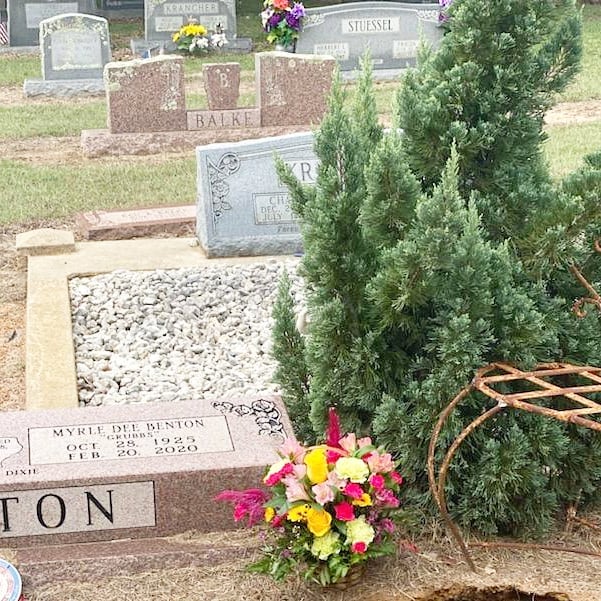Halloween and grief might seem like an odd and painful combination. But what if I told you the two were actually incredibly compatible — that Halloween should encourage us to commune with the loved ones we have lost?
My maternal grandmother was born on October 28, 1925.
She loved every holiday, but she especially adored Halloween. She liked its proximity to her birthday. Children trick-or-treated on the last Friday of October, whether or not it fell on the 31st, while she was growing up in the Heights of Houston during the 1930s. Thus, her 2nd, 7th, and 13th birthdays coincided with the actual celebration night of the spookiest holiday of the year.

Halloween and Grief: What if We’re Really Doing Death All Wrong Now?
As a retired elementary and middle school teacher, my grandmother delighted in collecting McDonald’s Happy Meal toys throughout the year. She handed them out to neighborhood children on Halloween night. She relished the fact that kids looked forward to receiving her unique treats. For her, Halloween was about building tradition and community, as well as her love of children. It was never about celebrating evil and fear.
The origins of Halloween
The earliest known origin of Halloween is an annual Gaelic festival called Samhain that involved animal skins, fortune telling, and a huge sacred bonfire. The Celts marked the end of the harvest season and beginning of winter by connecting with their deceased loved ones.

Celebrating All Saints’ Day and All Hallows’ Eve
According to the Mexican tradition of Día de los Muertos (Day of the Dead), the souls of deceased children can return on November 1st, and the souls of adults can return on November 2nd. Families build multi-layered ofrendas filled with marigolds, candles, photos, personal items, and favorite foods and beverages for the deceased travelers.
The Catholic Church attempted to adapt Samhain into a Christian holiday. Pope Gregory III designated November 1st as All Saints’ Day in the eighth century. Therefore, October 31st became All Hallows’ Eve, and, eventually, Halloween. (Hallows literally means saints.)
In Poland, families visit their loved ones’ graves and adorn them with candles and chrysanthemums on November 1st (All Saints’ Day) and November 2nd (All Souls’ Day).
Celebrating Halloween in America
Jack-o-lanterns (originally carved in turnips) to ward off evil spirits became a staple of All Hallows’ Eve in 19th century Ireland. The Puritans didn’t approve of Halloween’s pagan (or Catholic) beginnings, of course. The tradition didn’t really take hold in the American colonies, especially New England, until Irish and Scottish immigration increased with the Irish Potato Famine in the late 19th century.
I seem to remember a similar American Protestant evangelical — namely fundamentalist — backlash against the evils of mainstream Halloween. It happened 100 years later, in the late 20th century, when I was in middle school. (Remember Harvest Festivals at Southern Baptist Churches and Churches of Christ as an alternative to trick-or-treating and parties?)
My grandmother loved Halloween.
My United Methodist grandma of Scotch-Irish, Danish, and English descent was either oblivious or indignant (or some of both) to this regional assault on her favorite birthday-adjacent holiday.
But then again, my grandmother spent the second half of her life being more comfortable with death than many other people. The youngest member of her immediate family by eight years, she said goodbye to all of her family members earlier than most.
My grandmother then inherited her family’s funeral plots in two different cemeteries, put flowers on her parents’ graves for their birthdays every year, and started preparing me for her own death when I was in high school. (Neither of us were prepared for my mother’s death from Alzheimer’s disease in her 50s though.)
Communion with the saints
I sometimes wonder if we are celebrating Halloween and really doing death all wrong now. Perhaps this is why we tend to fetish-ize Halloween. We make it about evil spirits instead of about our communion with the saints who have gone before us. This is why it has become so difficult to reconcile Halloween and grief.
At some point, we decided that death was dark and creepy instead of normal and necessary. And we decided that dead believers (saints) were totally inaccessible to us instead of continuing to be an important part of our lives.
When we become more comfortable with death as a natural and necessary part of our life on Earth, our fear of the inevitable is replaced by our joy and confidence in the promises of heaven.
Reunion of the dead and the living
One day, when Christ returns, he will reunite all of the dead and living saints in the heaven he will recreate on a new Earth. Until then, however, I hope we will remember that wanting to commune with our deceased loved ones and to celebrate and honor their lives each year is not creepy. It’s actually, incredibly normal.
The saints who have gone before us may be gone from this Earth but their souls are very much alive in him, and their work here is not lost:
Here is a call for the endurance of the saints, those who keep the commandments of God and their faith in Jesus.
And I heard a voice from heaven saying, ‘Write this: Blessed are the dead who die in the Lord from now on.’ ‘Blessed indeed,’ says the Spirit, ‘that they may rest from their labors, for their deeds follow them!’
Revelation 14:12-13 ESV
A version of this post was originally published November 1, 2020.

2 replies on “Halloween and Grief: What if We’re Really Doing Death All Wrong Now?”
[…] between my late mom’s birthday and my grandmother’s ninety-second birthday, I had a respiratory illness and lost my voice for a week. Then I went on a women’s retreat with […]
[…] These days though? I love celebrating Halloween with my kids. […]